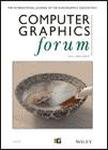版权所有:内蒙古大学图书馆 技术提供:维普资讯• 智图
内蒙古自治区呼和浩特市赛罕区大学西街235号 邮编: 010021

作者机构:MIT Cambridge MA 02139 USA Carnegie Mellon Univ Pittsburgh PA 15213 USA UCL London England
出 版 物:《COMPUTER GRAPHICS FORUM》 (计算机图形学论坛)
年 卷 期:2022年第41卷第3期
页 面:15-27页
核心收录:
学科分类:08[工学] 0835[工学-软件工程] 0812[工学-计算机科学与技术(可授工学、理学学位)]
基 金:NSF [1942659, 1122374, 1941577] Direct For Social, Behav & Economic Scie Divn Of Social and Economic Sciences Funding Source: National Science Foundation Div Of Information & Intelligent Systems Direct For Computer & Info Scie & Enginr Funding Source: National Science Foundation
主 题:CCS Concepts • Human-centered computing → Visualization design and evaluation methods Accessibility design and evaluation methods
摘 要:Current web accessibility guidelines ask visualization designers to support screen readers via basic non-visual alternatives like textual descriptions and access to raw data tables. But charts do more than summarize data or reproduce tables;they afford interactive data exploration at varying levels of granularity-from fine-grained datum-by-datum reading to skimming and surfacing high-level trends. In response to the lack of comparable non-visual affordances, we present a set of rich screen reader experiences for accessible data visualization and exploration. Through an iterative co-design process, we identify three key design dimensions for expressive screen reader accessibility: structure, or how chart entities should be organized for a screen reader to traverse;navigation, or the structural, spatial, and targeted operations a user might perform to step through the structure;and, description, or the semantic content, composition, and verbosity of the screen reader s narration. We operationalize these dimensions to prototype screen-reader-accessible visualizations that cover a diverse range of chart types and combinations of our design dimensions. We evaluate a subset of these prototypes in a mixed-methods study with 13 blind and visually impaired readers. Our findings demonstrate that these designs help users conceptualize data spatially, selectively attend to data of interest at different levels of granularity, and experience control and agency over their data analysis process. An accessible HTML version of this paper is available at: http://***/pubs/rich-screen-reader-vis-experiences.